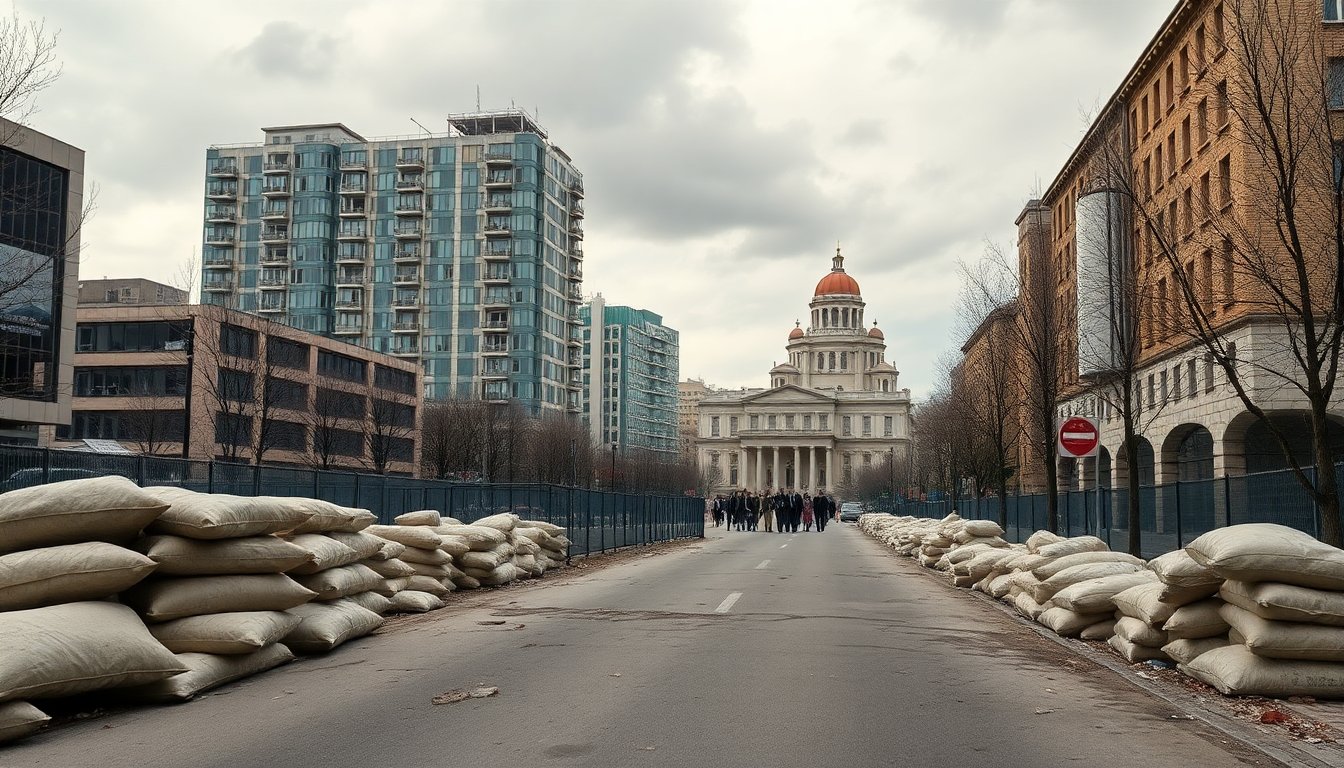Table of Contents
The proposal from the Trump administration regarding the conflict in Ukraine has generated significant discussion and concern. This plan reportedly revolves around a series of concessions aimed at resolving the territorial disputes resulting from Russia’s invasion of Ukraine. According to reports from Axios and Reuters, this multifaceted agreement seems to significantly favor Russian interests.
Overview of the proposed peace plan
Reports indicate that the new peace initiative includes 28 key points, specifying expectations and concessions from both Ukraine and Russia. A primary condition requires Ukraine to withdraw its military forces from the Donetsk region, effectively transferring control of the Donbas area to Russia. Additionally, the proposal calls for the establishment of a demilitarized zone encompassing the territories of Donetsk and Luhansk, prohibiting any military deployments by Russia in these areas.
Key concessions and implications
A critical element of the proposed plan is the freezing of current front lines in the Zaporizhzhia and Kherson regions. Although Russia has annexed these territories, it has not established complete control, necessitating negotiations to assess any potential return of land to Ukraine. Importantly, the plan includes provisions for the formal recognition by the United States and its allies of Russian claims over Crimea and Donbas. However, Ukraine would not be required to accept these claims.
The proposed plan for Ukraine includes significant changes, particularly in military capabilities and territorial adjustments. Reports indicate that Ukraine may need to reduce its military strength by as much as 50% or even more. Additionally, the plan restricts Ukraine’s use of long-range weaponry, preventing attacks deep into Russian territory. Another critical aspect of the proposal is the granting of official status to the Russian language in Ukraine, along with recognition of the Russian Orthodox Church.
Negotiations and Ukraine’s response
The negotiations surrounding the peace plan have faced significant challenges. Following a recent meeting in Turkey, reports indicate that Ukrainian President Volodymyr Zelensky has not supported the proposal put forth by the Trump administration. Internal divisions within Ukraine regarding this plan have reportedly hindered discussions with U.S. envoy Steve Witkoff. Instead of endorsing the U.S. initiative, Zelensky has introduced an alternative peace proposal developed in conjunction with European allies, which he believes Russia will reject.
International perspectives and skepticism
Observers indicate that the United States is urging Ukraine to examine the key elements of a proposed agreement. They believe that ongoing conflict could lead to significant losses in the Donbas region. This proposal represents Washington’s fourth attempt to outline a possible resolution to the conflict since Donald Trump’s return to office. As discussions advance, a U.S. official suggested that a ceasefire framework might be finalized soon, reflecting a growing sense of urgency.
While there is optimism from Washington, the Kremlin’s response has been mixed. Reports indicate that Russian officials are willing to resume talks. However, skepticism remains among European leaders. They worry that Russia’s newfound interest in negotiations may simply be a tactic to evade upcoming sanctions without making meaningful concessions.
Challenges and considerations in the peace process
The evolving situation in Ukraine has prompted both the nation and its allies to carefully assess the implications of the proposed peace plan. A key issue remains Ukraine’s ability to uphold its territorial integrity while participating in negotiations. This ongoing dialogue highlights a complex geopolitical landscape, where the pursuit of peace encounters numerous challenges and competing interests.
Ukrainian President Zelensky is focused on achieving a resolution that prioritizes the country’s sovereignty and security. He emphasizes the necessity of a coordinated approach with international partners to navigate this delicate process.
The proposed peace plan represents a critical juncture in the ongoing conflict, presenting both potential pathways to resolution and significant risks of deepening divisions. As discussions progress, the international community is closely monitoring Ukraine’s strategy in this precarious situation.


